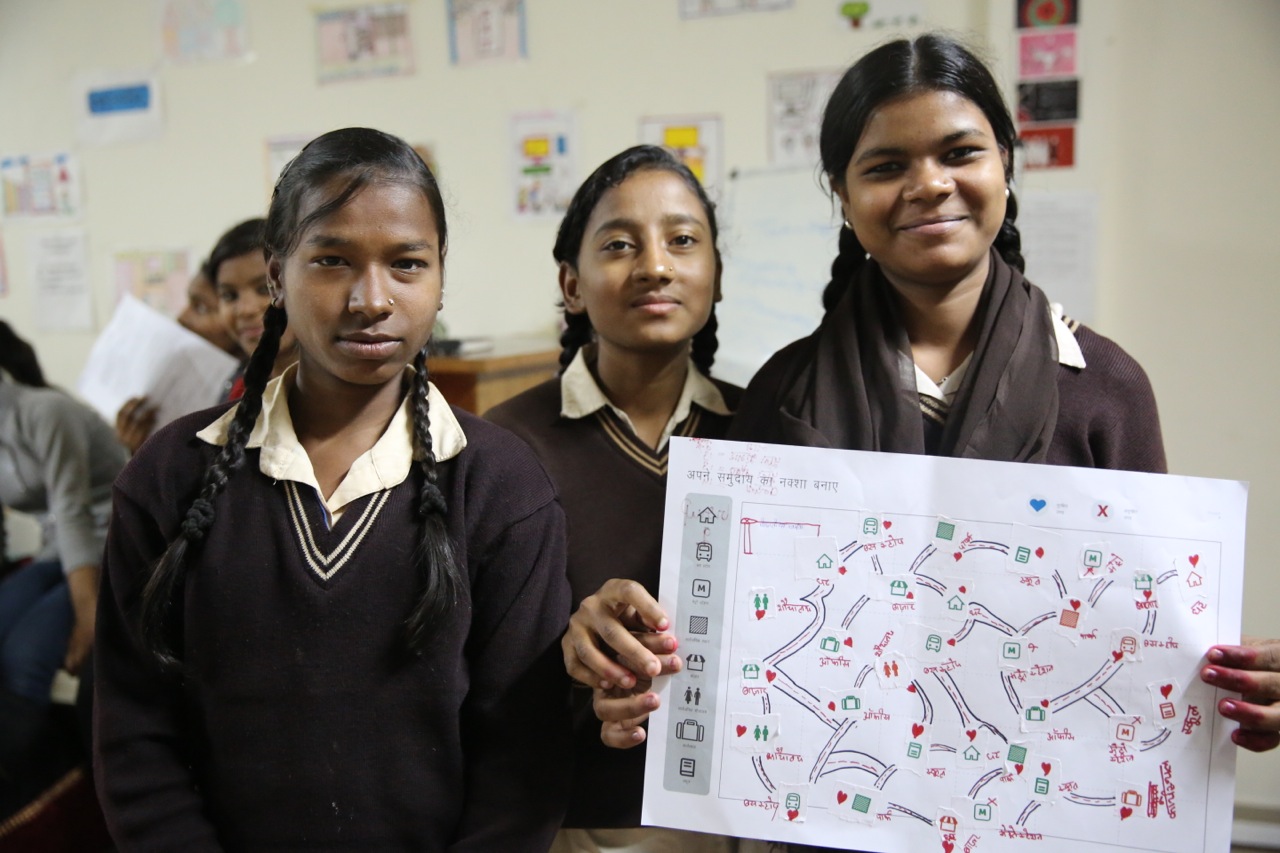HCD Method Spotlight: Freestyle Mapping
Delhi & Haryana, India | March 15, 2014

What We Did
We asked women and girls—community health workers, taxi drivers and secondary school girls—to draw a map of their community, and used their maps to guide a conversation around the factors that allow for or inhibit safety.
What You’ll Need
• Paper – ideally with some sort of grid [see sample]
• Pens
Extra credit: stickers with recognizable symbols for certain places mitigates an interviewee’s potential anxiety around having to draw accurately, so the conversation can stay focused on insights.
How to Do It
Step 1: Have your subject draw a map of their community, using stickers or hand-drawn symbols to identify businesses, schools, bus stations and other landmarks.
Step 2: Ask the person to identify areas that are safe for women with a heart and areas that are unsafe with an X.
Step 3: Use the map as a guide to compare and contrast different places and understand why some areas are perceived as safer than others.
What We Learned
By doing the same mapping exercise with several different groups of women in Delhi, our team was not only able to explore people’s individual perceptions around safety, but also to draw various insights from comparing and contrasting the maps.
In trying this activity in India, we also learned a lot about the context. We had originally envisioned having interviewees draw their maps on transparent paper, with a map of Delhi underneath. Given the lack of familiarity and use of maps for driving and navigation in India, though, the activity worked much better with a blank grid and free-drawing.
Why It Counts
Maps are tangible, so they allow for a conversation grounded in reality. Also, for potentially sensitive subjects like safety, having someone draw a map is a great way to phrase questions that are less intrusive or direct. When a woman we interviewed seemed less comfortable opening up about her own experiences, we were still able to extract insights by asking her about places on her map that she would or would not advise another woman to go and why. One degree removed, many of the people we interviewed became much more candid.

